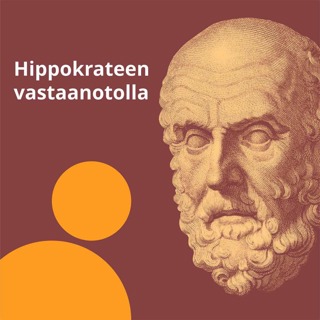
Deadlines Loom for FEMA Hurricane Disaster Assistance, Unemployment, and Appeals
Meteorology Matters provides details onthe Disaster Unemployment Assistance (DUA) and Federal Emergency Management Agency (FEMA) aid available to Florida residents affected by Hurricanes Helene and Milton. We explain how to apply for FEMA assistance and appeal denials, highlighting challenges faced by applicants. We also focus on DUA application procedures, deadlines, and eligibility requirements for individuals whose employment was impacted by the hurricanes. We go over supplemental information on DUA, including eligibility criteria, application methods, and appeal processes, emphasizing the importance of meeting deadlines and providing necessary documentation. We aim to inform and guide individuals seeking aid after the hurricanes before time runs out!
25 Marras 202416min

What a Second Trump Term Means for Science
People express concern over the potential impact of a second Trump presidency on US science policy. They highlight anxieties regarding potential budget cuts to scientific research, increased focus on research security potentially hindering international collaboration, and a diminished respect for scientific consensus in policy decisions, particularly concerning climate change and public health. The appointment of Robert F. Kennedy Jr. to a key position is cited as a cause for alarm due to his controversial views on public health. Finally, there are discussions of proactive strategies for the scientific community to engage with the new administration and advocate for continued funding and the preservation of independent scientific agencies.
25 Marras 202416min

Climate Change Supercharged Hurricane Season 2024
Meteorology Matters looks at how Climate change significantly intensified the 2024 Atlantic hurricane season. Multiple reports, including one from Climate Central and a peer-reviewed study in Environmental Research: Climate, confirm that human-caused ocean warming increased the wind speeds of all eleven hurricanes. This resulted in seven hurricanes being upgraded to higher Saffir-Simpson categories and two tropical storms becoming hurricanes. The increased intensity led to substantial damage and economic losses, with climate change attributed to a significant portion of the damage caused by Hurricanes Helene and Milton. A separate analysis by a hurricane expert highlights the unusually active 2024 season, noting record-breaking ocean temperatures and the occurrence of three simultaneous hurricanes in October.
23 Marras 202418min

November Florida Hurricanes & Potential Sara
A potential tropical storm, dubbed Invest 99L, is forming in the Caribbean and has a high chance of developing into Tropical Storm Sara within the next few days.Multiple weather models are forecasting Sara to potentially become a hurricane and threaten Florida's Gulf Coast next week, although the track and intensity of the storm remain uncertain. MeteorologyMatters discusses the rarity of November hurricanes, with only three recorded landfalls in the US since 1850, but warn that warm water temperatures in the Atlantic basin are fueling an unusually active hurricane season.
13 Marras 202417min

Abortion and LGBTQ Community Cause Hurricanes?
Meteorology Matters addresses Tucker Carlson’s bizarre assertion that abortions cause hurricanes, dismissing scientific explanations for their increased frequency and intensity, and instead linking them to a supposed “human sacrifice.” We examine these claims through a scientific lens, presenting evidence that contradicts their religious justifications and highlights their potential harm in influencing public opinion on scientific and social issues. We look back at televangelist Pat Robertson’s claims over the years that he can control the weather and that God is punishing the U.S. for its increasing acceptance of homosexuality, specifically targeting Disney World and abortion supporters.
12 Marras 202420min

Biden Protecting Climate Protections from Donald Trump
Meteorology Matters looks at the potential impact of Donald Trump’s return to the presidency on science and environmental policy. Currently, the Biden administration is trying to solidify its environmental policies, such as those regarding greenhouse gas emissions and vehicle electrification, before Trump takes office. We examine the uncertainty surrounding Trump’s potential return to power and how it might influence scientific research, particularly concerning climate change, vaccine skepticism, and the role of government funding in science. There’s the potential for conflict between Trump’s agenda and the goals of the scientific community.
11 Marras 20248min

Climate Policy: Kamala Harris vs Donald Trump
Meteorology Matters compares and contrasts the climate change policies of Vice President Kamala Harris and former President Donald Trump. We explore their records on climate change, examining their stances on issues such as the Paris Agreement, renewable energy investment, electric vehicles, and fossil fuel projects. We look at the broader implications of their positions for the future of U.S. climate policy, highlighting their contrasting views on the urgency of climate action and their approaches to clean energy transitions. The candidates' foreign policy platforms, including their views on the war in the Middle East, the NATO alliance, climate change, trade with China, aid for Ukraine, and immigration. Delving into the potential impact of a Harris or Trump administration on climate and energy policy, we analyze the challenges and constraints they will face in implementing their agendas.
5 Marras 202423min

National Hurricane Center Monitoring Possible Development for November Tropical Systems
Meteorology Matters discusses the possibility of tropical development in the Atlantic basin during the final month of hurricane season. We look at three specific areas of interest: the southwestern Caribbean Sea, the northeastern Caribbean Sea and Greater Antilles, and the North Atlantic. We also emphasize the importance of monitoring these systems as their development and movement could potentially bring heavy rainfall and flooding to various regions.
2 Marras 202418min



















